You want to request separator resource or URL handler mapping. this is easy in Spring.
Servelet-context
<!-- Handles HTTP GET requests for /resources/** by efficiently serving
up static resources in the ${webappRoot}/resources directory -->
<resources mapping="/resources/**" location="/resources/" />
and
<default-servlet-handler />
This tag allows for mapping the DispatcherServlet to "/" (thus
overriding the mapping of the container's default Servlet), while
still allowing static resource requests to be handled by the
container's default Servlet [...]
enter link description here
Maybe you useful this spring security content.
CustomWebSecurityConfigurerAdapter
Our HelloWebSecurityConfiguration sample, demonstrates that Spring Security Java configuration can provide some very nice defaults for us. Let’s take a look at some basic customization.
@EnableWebSecurity
@Configuration
public class CustomWebSecurityConfigurerAdapter extends
WebSecurityConfigurerAdapter {
@Autowired
public void configureGlobal(AuthenticationManagerBuilder auth) {
auth
.inMemoryAuthentication()
.withUser("user") // #1
.password("password")
.roles("USER")
.and()
.withUser("admin") // #2
.password("password")
.roles("ADMIN","USER");
}
@Override
public void configure(WebSecurity web) throws Exception {
web
.ignoring()
.antMatchers("/resources/**"); // #3
}
@Override
protected void configure(HttpSecurity http) throws Exception {
http
.authorizeUrls()
.antMatchers("/signup","/about").permitAll() // #4
.antMatchers("/admin/**").hasRole("ADMIN") // #6
.anyRequest().authenticated() // 7
.and()
.formLogin() // #8
.loginUrl("/login") // #9
.permitAll(); // #5
}
}
Assuming that we adjust AbstractAnnotationConfigDispatcherServletInitializer to load our new configuration, our CustomWebSecurityConfigurerAdapter will do the following:
- Allow in memory authentication with a user named “user”
- Allow in memory authentication with an administrative user named
“admin”
- Ignore any request that starts with “/resources/”. This is similar to
configuring http@security=none when using the XML namespace
configuration.
- Allow anyone (including unauthenticated users) to access to the URLs
“/signup” and “/about”
- Allow anyone (including unauthenticated users) to access to the URLs
“/login” and “/login?error”. The permitAll() in this case means,
allow access to any URL that formLogin() uses.
- Any URL that starts with “/admin/” must be an administrative user.
For our example, that would be the user “admin”.
- All remaining URLs require that the user be successfully
authenticated
- Setup form based authentication using the Java configuration
defaults. Authentication is performed when a POST is submitted to the
URL “/login” with the parameters “username” and “password”.
- Explicitly state the login page, which means the developer is
required to render the login page when GET /login is requested.
For those that are familiar with the XML based configuration, the configuration above is very similar to the following XML configuration:
<http security="none" pattern="/resources/**"/>
<http use-expressions="true">
<intercept-url pattern="/logout" access="permitAll"/>
<intercept-url pattern="/login" access="permitAll"/>
<intercept-url pattern="/signup" access="permitAll"/>
<intercept-url pattern="/about" access="permitAll"/>
<intercept-url pattern="/**" access="hasRole('ROLE_USER')"/>
<logout
logout-success-url="/login?logout"
logout-url="/logout"
/>
<form-login
authentication-failure-url="/login?error"
login-page="/login"
login-processing-url="/login"
password-parameter="password"
username-parameter="username"
/>
</http>
<authentication-manager>
<authentication-provider>
<user-service>
<user name="user"
password="password"
authorities="ROLE_USER"/>
<user name="admin"
password="password"
authorities="ROLE_USER,ROLE_ADMIN"/>
</user-service>
</authentication-provider>
</authentication-manager>
Similarities to the XML Namespace
After looking at our slightly more complicated example, you might be able to find some similarities between the XML namespace and the Java configuration. Here are some of the more useful points:
- HttpSecurity is quite similar to the http namespace element. It
allows configuring web based security for a certain selection (in
this case all) requests.
- WebSecurity is quite similar to any Security namespace elements that
are for the web and that do not require a parent (i.e. security=none,
debug, etc). It allows configuring things that impact all of web
security.
- WebSecurityConfigurerAdapter is a convenience class that allows
customization to both WebSecurity and HttpSecurity. We can extend
WebSecurityConfigurerAdapter multiple times (in distinct objects) to
replicate the behavior of having multiple http elements.
- By formatting our Java configuration code it is much easier to read.
It can be read similar to the XML namespace equivalent where “and()”
represents optionally closing an XML element.
Spring Security Java Config Preview

